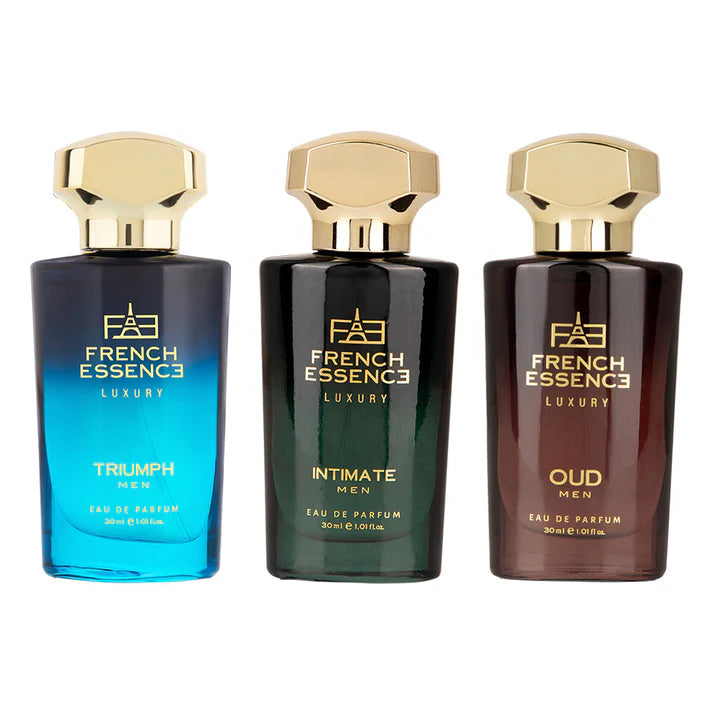
DIY Perfume Mixing - How to Create Your Signature Scent at Home
Basic Principles of Perfume Composition
Before we delve into the intricacies of creating a custom perfume set, let’s understand the basic principles of perfume composition.
The art of perfumery revolves around blending three layers of notes: top, middle, and base notes. The top notes are the initial fresh smell after the spritz, comprising herbs or citrus. When these scents fade, rich and complex middle notes of floral and spicy elements emerge. Finally, heavy and warm scents of musk or vanilla make the base note that lasts several hours after application. Understanding this composition helps in creating a balanced and cohesive perfume.
Essential Equipment and Materials for Mixing Perfume at Home
- Fragrance oils/essential oils: These are primary components for creating different aromas.
- Carrier oils: They are used to dilute and disperse the scent. Common carrier oils include almond oil, fractionated coconut oil, and jojoba oil.
- Alcohol: High-proof vodka or perfumers’ alcohol helps to blend and preserve the scent.
- Distilled water: This further blends and dilutes the ingredients.
- Beakers/glass mixing bottles: Helpful in mixing all ingredients.
- Droppers/Pipettes: For accurate measurement of oils and alcohol.
- Glass stirring rod: For blending perfume oils and ensuring a thorough mix.
- Test paper/scent strips: To check and adjust the blend.
- Funnel: Helps pour all ingredients into the bottles without spilling.
- Glass containers: To store homemade perfumes.
Step-by-Step Guide to Creating a Custom Scent
- Choosing base notes: Base notes form the foundation of any perfume. These scents provide depth and linger on for hours such as musk, vanilla, and sandalwood. Start by adding a few drops of your favourite base note oil to the glass mixing bottle.
- Adding heart notes: Once our base is ready, add heart/middle notes, this is the core of your scent and will emerge once the base settles down. Middle notes typically include fruity, floral, and spicy smells like jasmine, rose or cinnamon. Heart notes merge with the base to form the essence of your signature scent.
- Finishing with top notes: Top notes will complete the final fragrance of your perfume. These notes are the initial scents that emerge after the spray. They include citrus or fresh elements like lemon or bergamot. These notes are added in the last step to ensure they perfectly match the base and heart notes.
5 Best Perfume Sets for Beginners
Enhance your personality with French Essence’s redefined scents of Oud, Triumph, and Intimate. This perfume set combo packs a trio of luxury scents to evoke intimacy, confidence, and sophistication.

Soak yourself in three captivating scents with this perfume set that embodies charm, passion, and elegance. Meticulously crafted for women, this scent has aromas to complement your style and mood.

This four unique scent combo caters to the active lifestyle of the modern man. From notes like pineapple, marigold, sandalwood, and jasmine to birch, cedarwood, and bergamot, this perfume set has a fragrance that matches every mood and occasion.

Capture the real French essence and allure with this exquisite perfume set. These well-curated fragrances are designed for classic elegance and unmatched femininity.

Carry the epitome of sophistication wherever you go with this French Essence luxury perfume set for men. These four scents – Blew, Jazz, Night, and Noir radiate your everlasting charm and confidence.

Common Mistakes to Avoid in DIY Perfume Mixing
- Ignoring quality: Cheap and poor-quality fragrances or essential oils will only release unpleasant smells. Invest in good-quality ingredients for perfumes.
- Using many ingredients: Overloading perfume with several notes can be chaotic. Stick to the principle of balanced composition.
- Ignoring proportions: Incorrect ratios of perfume materials can result in weak or overpowering fragrances. Keep proportionate ratios for a harmonious scent profile.
- Neglecting ageing time: Rushing the perfume process can adversely affect the scent. Give your fragrances enough time to blend and mature.
- Skipping testing: Not testing your blend on a smaller scale can bring unexpected results to a larger batch. Test your samples in small samples with different ratios of raw materials.
The art of a DIY perfume set is empowering as it opens up a world of creativity for crafting your fragrance. By making your unique scents, you gain deeper insights into fragrance composition and can create numerous perfumes that reflect your style.
Before you go, check out French Essence to bag some exquisite French perfume sets.
